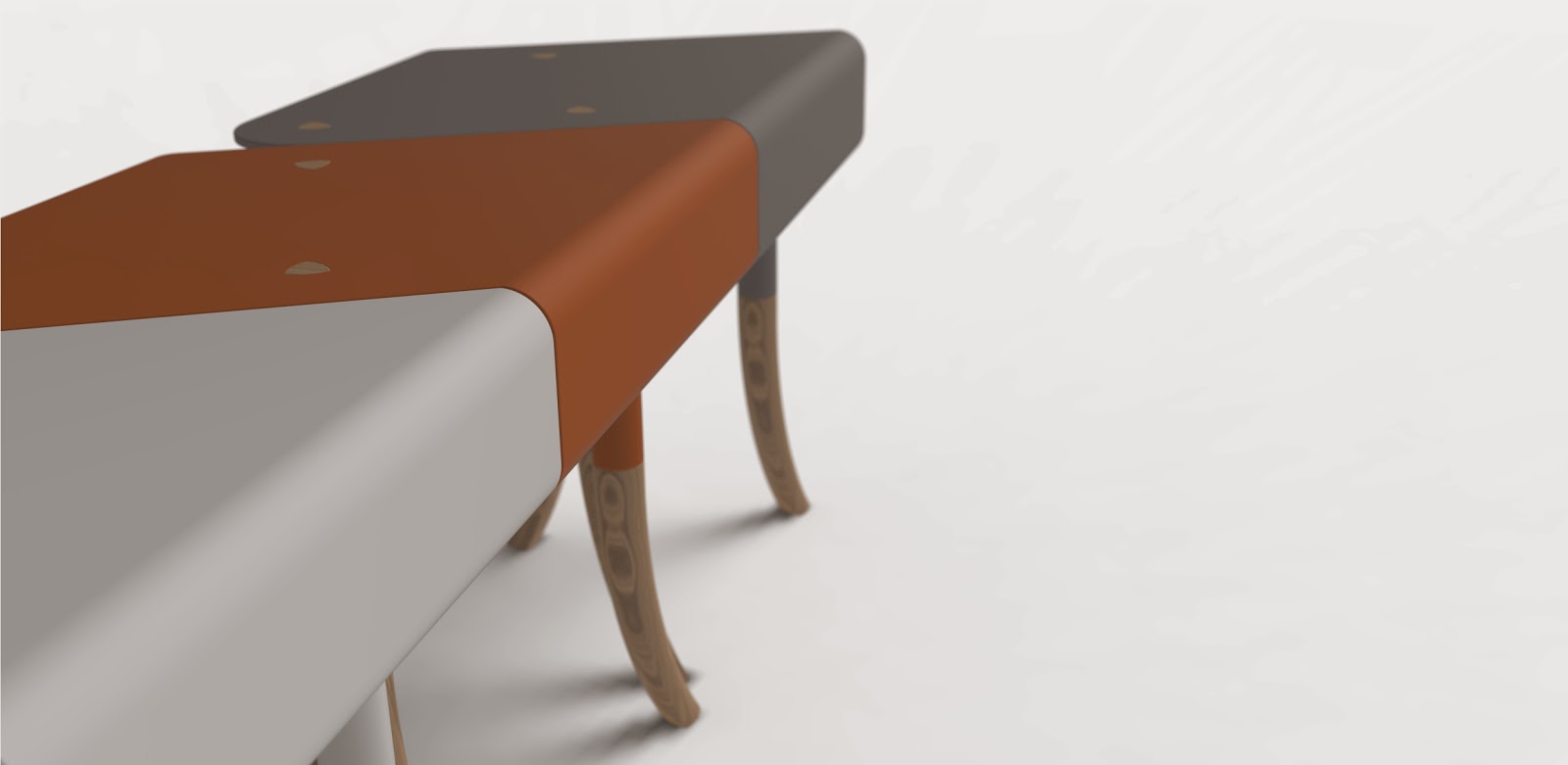Now that I'm finished with the process part of this big project, I have to look forward and think about how the future of this design is going to play out. I've decided I'm going to make my stools multi-coloured, as well as also rolling with the name "The HERD stool". After talking to my tutor and lecturers about the design of the stools, I decided to ever so slightly scale the top part of the stool up and make it a little more substantial, as well as slightly altering the design of the section that attaches to the other stools.
I've worked hard to get the form of the stool just right, and the redesign of the connecting section took ages to get to the point at which I was happy with it. The design now is a little more fluid and curvaceous, juxtaposing against the relative angularity of the rest of the design. The design for that section now reflects choices to make the form useful in multiple respects.
The animal-like character is starting to come through more and more, and a suggestion from my lecturer to make the connecting slot also have the potential to hold wine glasses was a good one. The slot is representative of a few things now and the curvaceous form is a way of showcasing that.
And the best way for a render to show that off is of course to do a clay render! I really enjoy clay renders. They're heaps of fun and they show off the geometry really well without distorting our perception of the form with "extraneous" textures. I think I've found my new favourite way to render. I'm still nailing down the slight material settings for it in KeyShot, but I'll get it there soon.

Today I went out to Metco Engineering after talking to my tutor. One of the most important readjustments I've done over the past morning is to actually decide to design the stool out of aluminium in stead of steel. This was done for a variety of reasons, but the most prominent was because of the weight of the stools. The steel version of the stool was going to weigh in at a hefty 12kg, while the same stool in aluminium would only weigh a mere 4.5kg. This would significantly reduce it's toddler-crushing potential if it was knocked over, as well as ensure the stools were easy to manipulate and move around.

An area that my tutor and I differed on was about the way in which the stools should be coloured. I was adamant that I thought they should be differently coloured, while he was more of the opinion that they should all be the same. The rationale for either in the context of the "herd" is fairly sound. The first way you can look at it is to say that "each stool is identical, the same colour, hence indistinguishable from the rest of the herd".
The second way of looking at it is to say that "each member of the herd is unique, yet from an outside looking form-only perspective, the stools are identical. They all want to be together and they like being connected to one another."
I also think that colour would give the stools more character, while also livening up the space that the stools sit together in.





















































